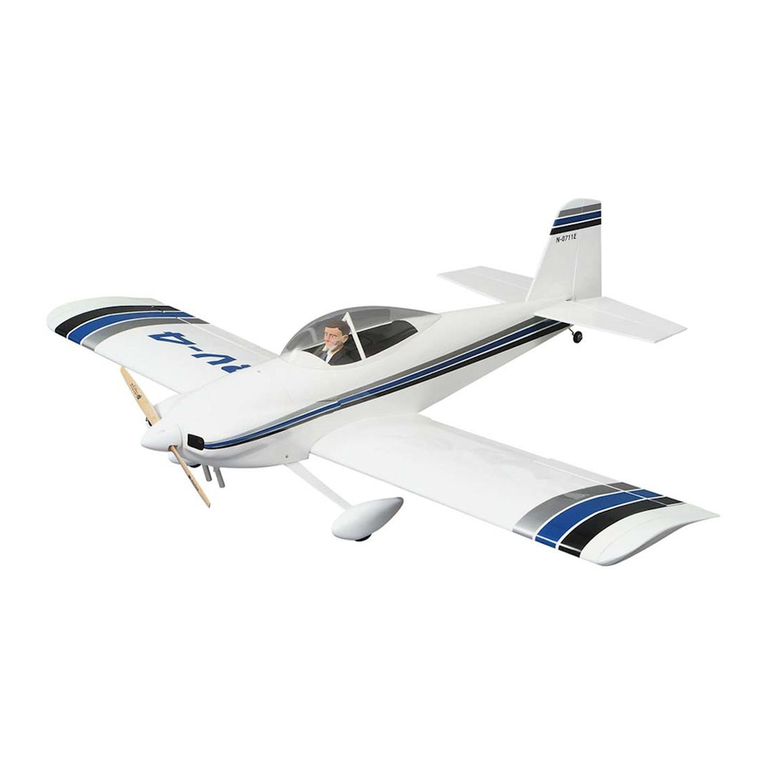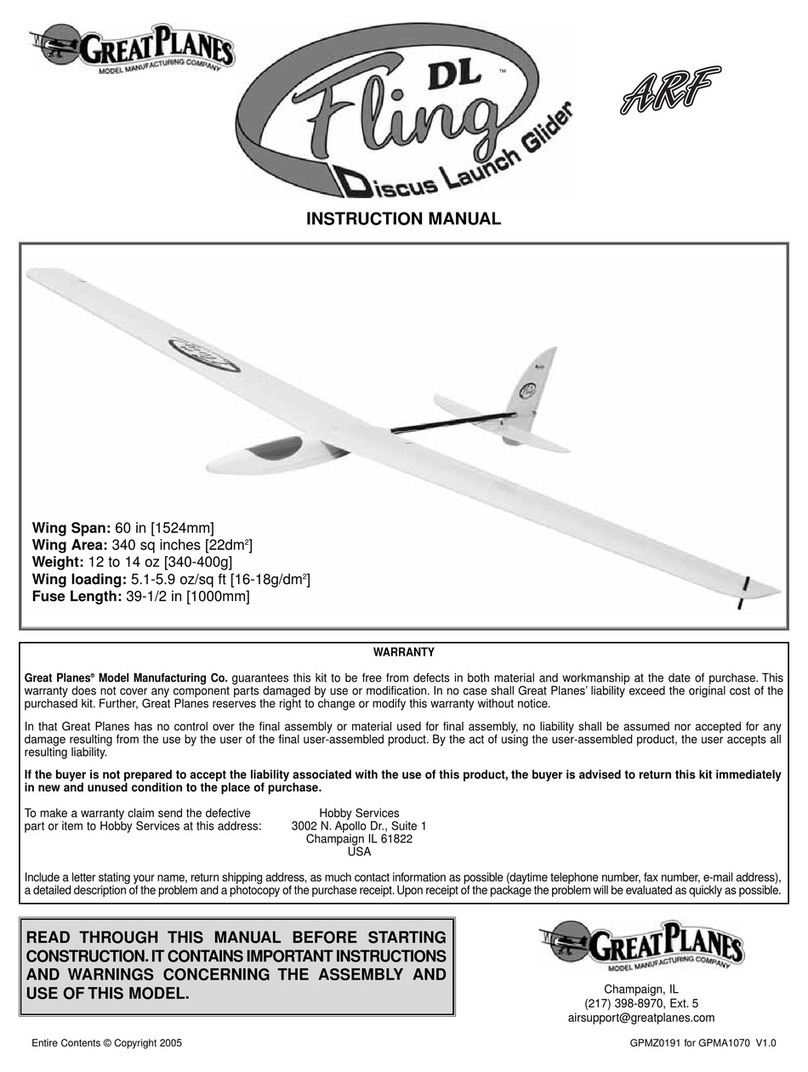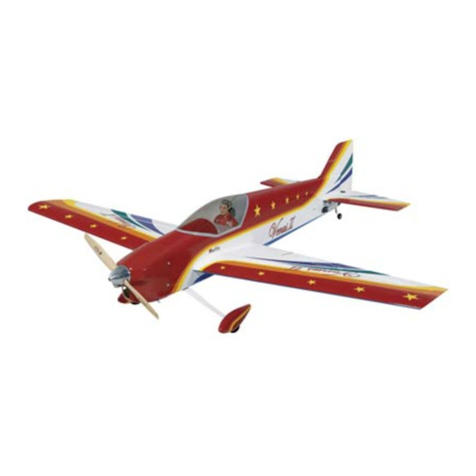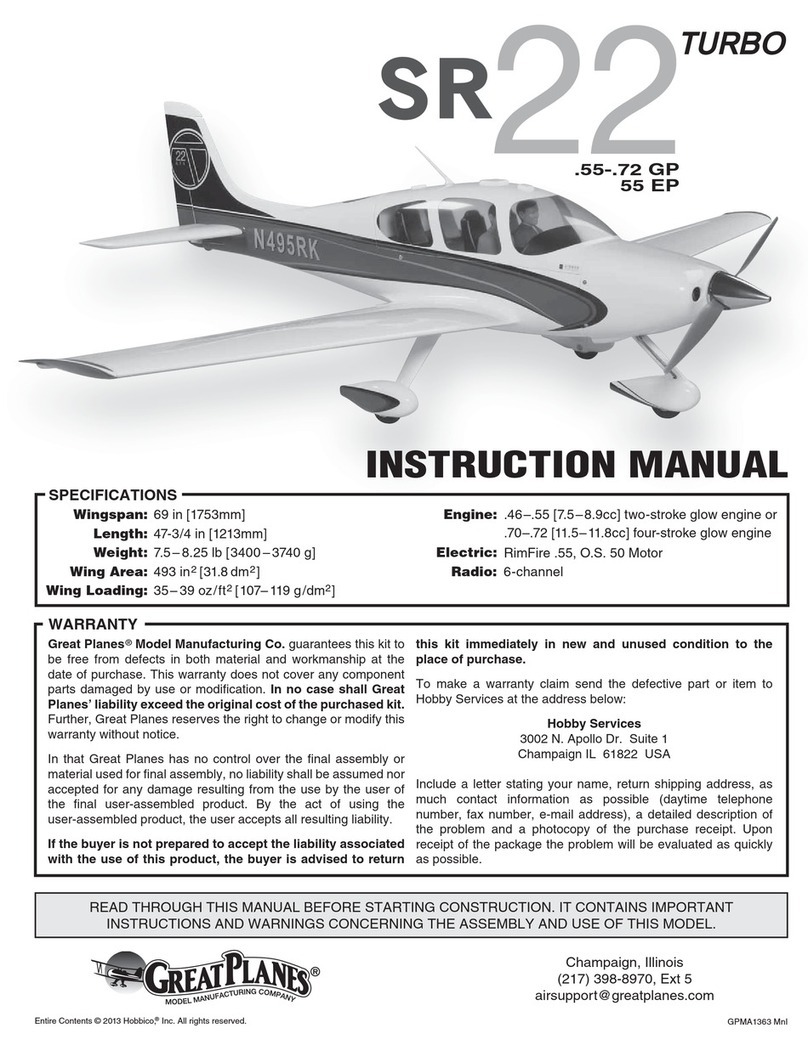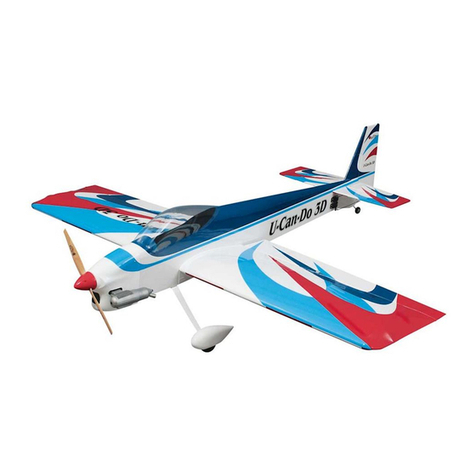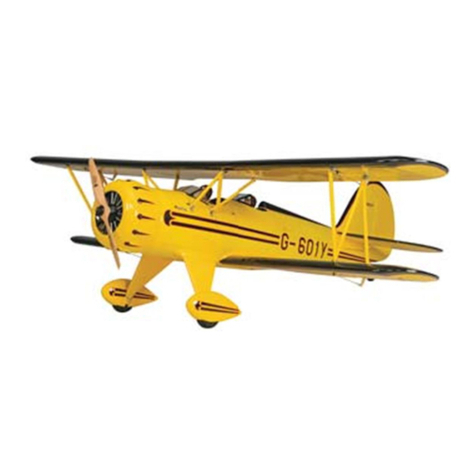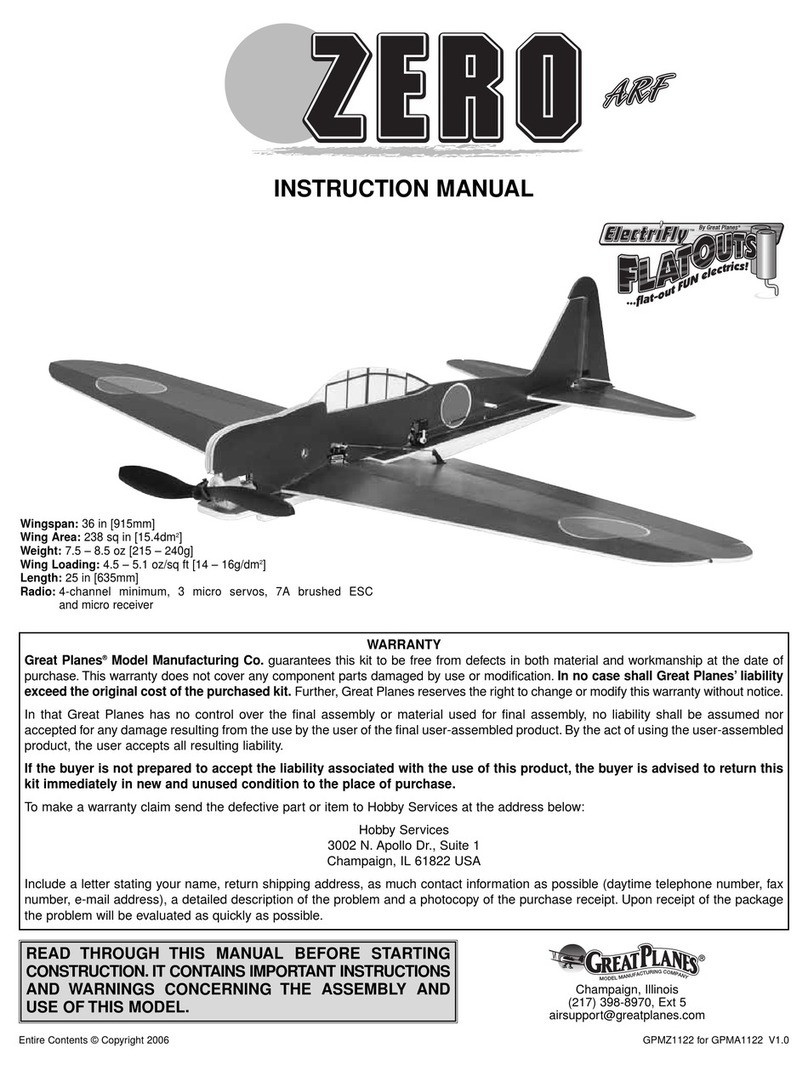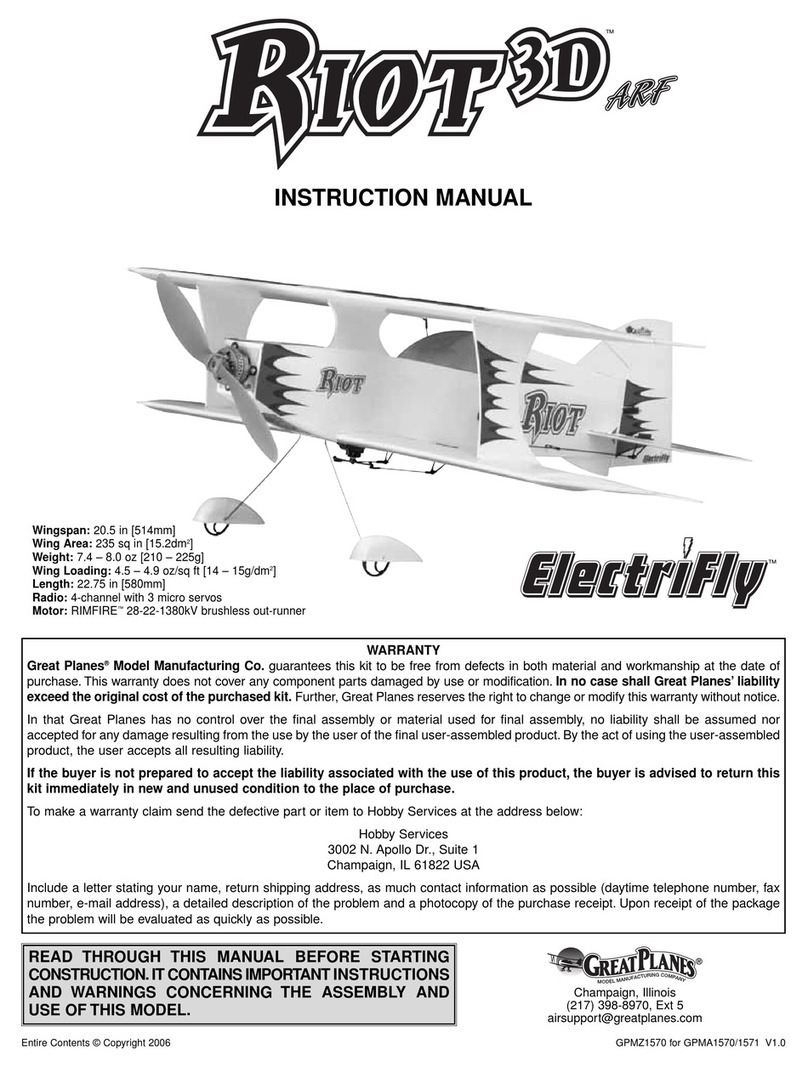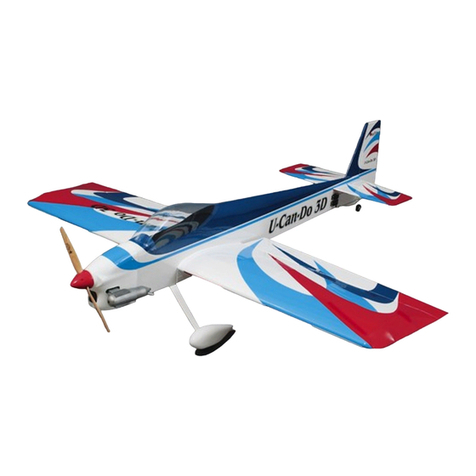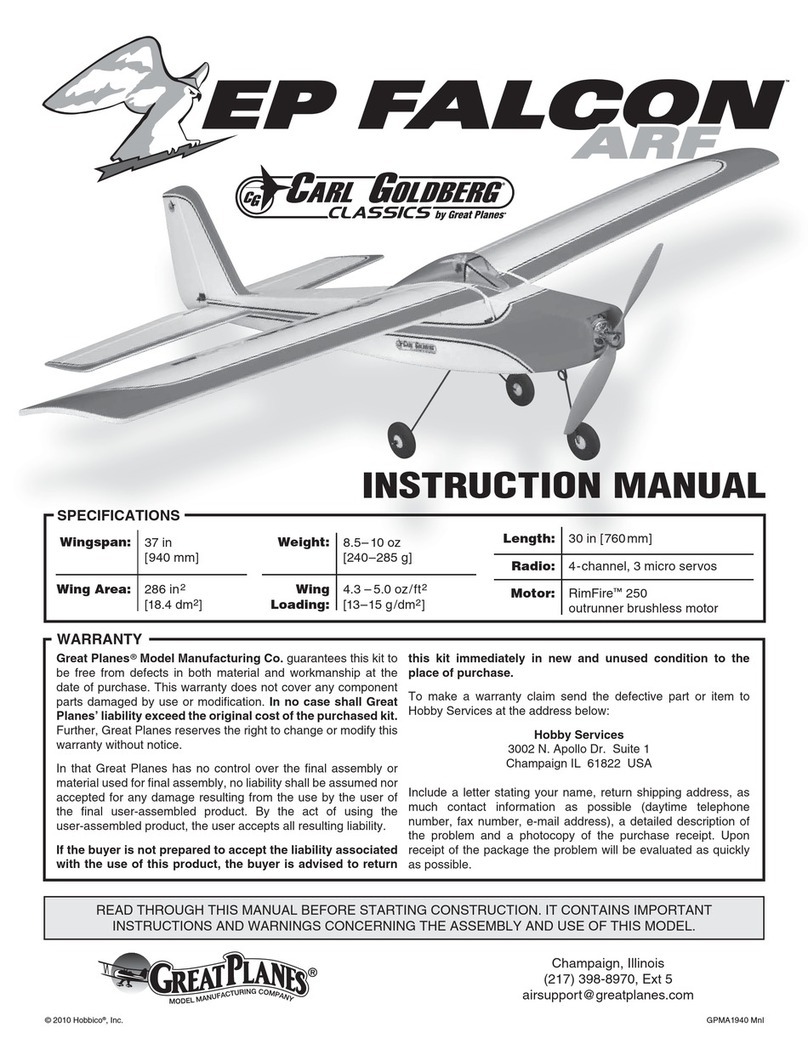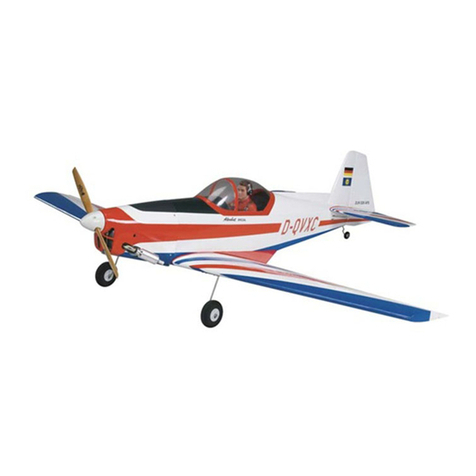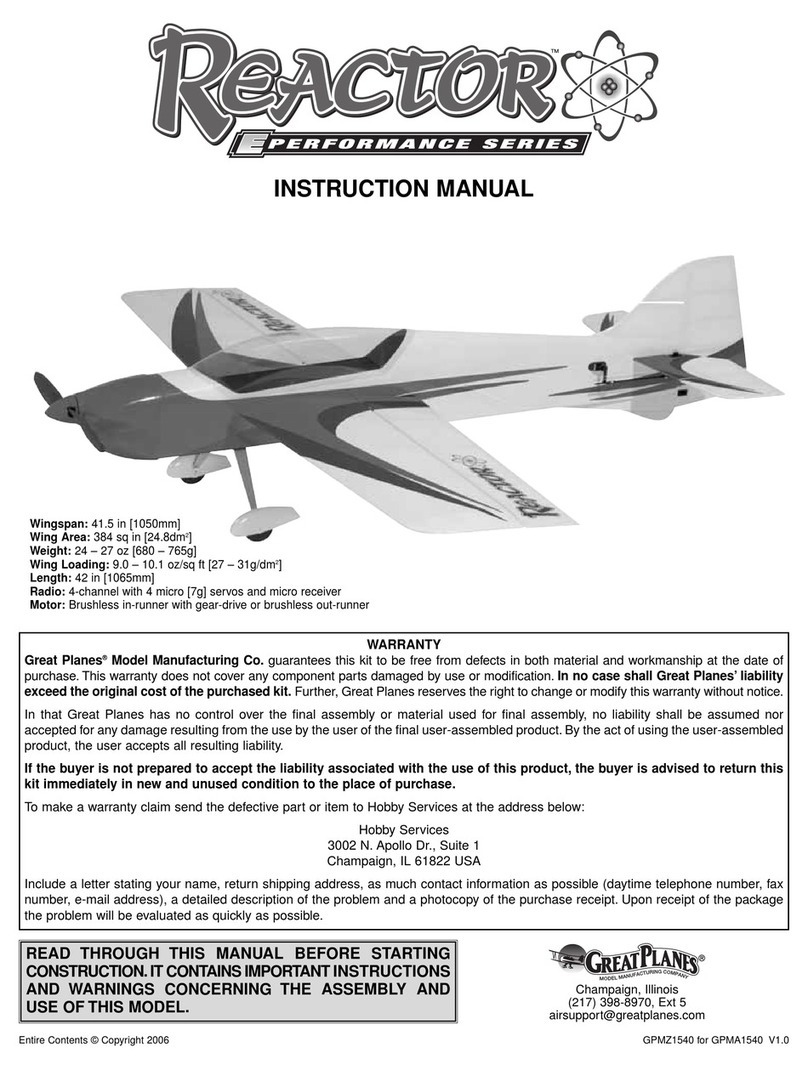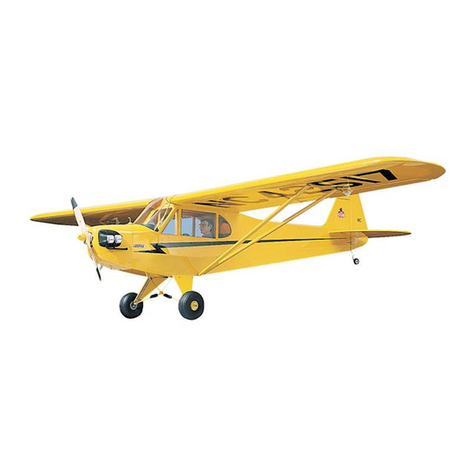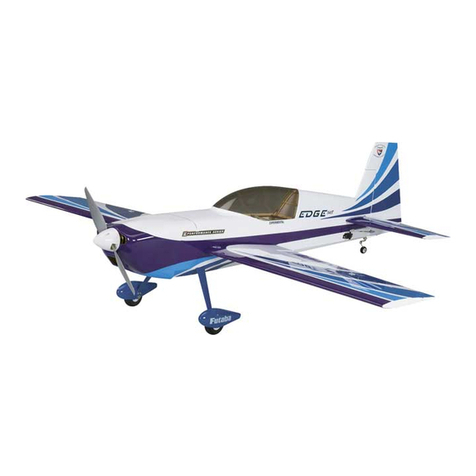
2
TABLE OF CONTENTS
INTRODUCTION . . . . . . . . . . . . . . . . . . . . . . . . . . . . . . . .2
AMA. . . . . . . . . . . . . . . . . . . . . . . . . . . . . . . . . . . . . . .2
SAFETY PRECAUTIONS . . . . . . . . . . . . . . . . . . . . . . . . .2
DECISIONSYOU MUST MAKE. . . . . . . . . . . . . . . . . . . . .3
Indoor Motor and Battery Recommendations . . . . . . .3
Radio Recommendations. . . . . . . . . . . . . . . . . . . . . . .3
Charger . . . . . . . . . . . . . . . . . . . . . . . . . . . . . . . . . . . .3
ADDITIONAL ITEMS REQUIRED . . . . . . . . . . . . . . . . . . .3
Adhesives and Building Supplies. . . . . . . . . . . . . . . . .3
Optional Supplies. . . . . . . . . . . . . . . . . . . . . . . . . . . . .4
IMPORTANT BUILDING NOTES. . . . . . . . . . . . . . . . . . . .4
KIT INSPECTION. . . . . . . . . . . . . . . . . . . . . . . . . . . . . . . .4
KIT CONTENTS. . . . . . . . . . . . . . . . . . . . . . . . . . . . . . . . .4
BUILDTHE FUSELAGE . . . . . . . . . . . . . . . . . . . . . . . . . .5
RADIO INSTALLATION. . . . . . . . . . . . . . . . . . . . . . . . . . .9
PUSHROD LENGTH ADJUSTMENT . . . . . . . . . . . . . . .10
INSTALLTHE MOTOR. . . . . . . . . . . . . . . . . . . . . . . . . . .12
Balance the Model (C.G.). . . . . . . . . . . . . . . . . . . . . .13
PROTIP . . . . . . . . . . . . . . . . . . . . . . . . . . . . . . . . . . . . . .14
GETTHE MODEL READYTO FLY . . . . . . . . . . . . . . . . .15
Check the Control Directions. . . . . . . . . . . . . . . . . . .15
Set the Control Throws. . . . . . . . . . . . . . . . . . . . . . . .16
PREFLIGHT. . . . . . . . . . . . . . . . . . . . . . . . . . . . . . . . . . .16
IdentifyYour Model. . . . . . . . . . . . . . . . . . . . . . . . . . .16
Charge the Batteries . . . . . . . . . . . . . . . . . . . . . . . . .16
Balance Propellers. . . . . . . . . . . . . . . . . . . . . . . . . . . 17
Ground Check and Range Check . . . . . . . . . . . . . . . 17
MOTOR AND BATTERY SAFETY PRECAUTIONS . . . . 17
LITHIUM BATTERY HANDLING AND USAGE. . . . . . . . 17
AMA SAFETY CODE. . . . . . . . . . . . . . . . . . . . . . . . . . . . 17
General . . . . . . . . . . . . . . . . . . . . . . . . . . . . . . . . . . .18
Radio Control. . . . . . . . . . . . . . . . . . . . . . . . . . . . . . .18
CHECK LIST . . . . . . . . . . . . . . . . . . . . . . . . . . . . . . . . . .18
FLYING. . . . . . . . . . . . . . . . . . . . . . . . . . . . . . . . . . . . . . .18
Takeoff . . . . . . . . . . . . . . . . . . . . . . . . . . . . . . . . . . . .19
Flight . . . . . . . . . . . . . . . . . . . . . . . . . . . . . . . . . . . . .19
Landing . . . . . . . . . . . . . . . . . . . . . . . . . . . . . . . . . . .19
INTRODUCTION
The indoor 3D flying craze started with flat foamies, which
helped get many modelers started in indoor flying. The
planes were heavy and sometimes difficult to assemble.The
Extra 330SC Indoor Foam Plane is the new generation of
flat foamies, light, easy and quick to build.The Extra 330SC
Indoor Foam Plane is capable of slow, mild 3D to all out wild
3D maneuvers. If your indoor flying area is small, you will be
pleased with what you can do with the Extra 330SC Indoor
Foam Plane.
For the latest technical updates or manual corrections to the
Extra 330SC Indoor Foam Plane visit the Great Planes web
site at www.greatplanes.com.Open the“Airplanes”link, then
select the Extra 330SC Indoor Foam Plane. If there is new
technical information or changes to this model a “tech notice”
box will appear in the upper left corner of the page.
AMA
If you are not already a member of the AMA, please join!
The AMA is the governing body of model aviation and
membership provides liability insurance coverage, protects
modelers’ rights and interests and is required to fly at
most R/C sites. The AMA has two classes of membership
available: Open membership or their Park Pilot Program,
which this aircraft qualifies for.The Park Pilot Program is for
people flying electric aircraft and gliders under two pounds
and which fly slower than 60mph. This will enable you to
enjoy most AMA benefits and organize clubs and flying sites
in more congested areas.
Academy of Model Aeronautics
5151 East Memorial Drive
Muncie, IN 47302-9252
Ph. (800) 435-9262
Fax (765) 741-0057
Or via the Internet at:
http://www.modelaircraft.org
http://www.modelaircraft.org/parkflyer.aspx
IMPORTANT!!! Two of the most important things you
can do to preserve the radio controlled aircraft hobby are to
avoid flying near full-scale aircraft and avoid flying near or
over groups of people.
PROTECT YOUR MODEL, YOURSELF
& OTHERS… FOLLOW THESE
IMPORTANT SAFETY PRECAUTIONS
1.Your Extra 330SC Indoor Foam Plane should not be
considered a toy, but rather a sophisticated, working model
that functions very much like a full-size airplane. Because
of its performance capabilities, the Extra 330SC Indoor
Foam Plane, if not assembled and operated correctly, could
possibly cause injury to yourself or spectators and damage
to property.
2.You must assemble the model according to the
instructions. Do not alter or modify the model, as doing
so may result in an unsafe or unflyable model. In a few
cases the instructions may differ slightly from the photos.
In those instances the written instructions should be
considered as correct.
3.You must take time to build straight, true and strong.
4.You must use an R/C radio system that is in good condition,
a correctly sized engine, and other components as specified
in this instruction manual. All components must be correctly
installed so that the model operates correctly on the ground
and in the air.You must check the operation of the model and
all components before every flight.
5. If you are not an experienced pilot or have not flown
this type of model before, we recommend that you get
the assistance of an experienced pilot in your R/C club for

